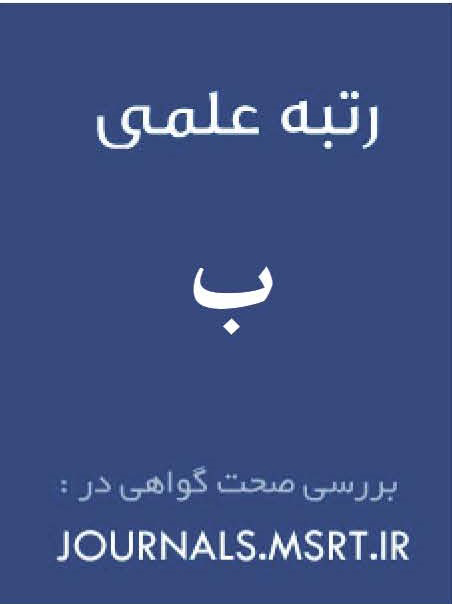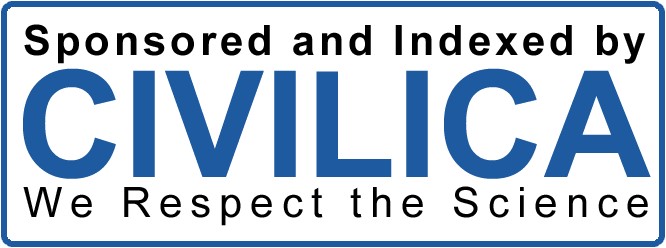Modeling of Pregnancy Motivation based on Quality of Life with the Mediation of Pregnancy Anxiety
Keywords:
Pregnancy motivation, quality of life, pregnancy anxietyAbstract
Objective:Motivation and tendency to become pregnant are considered to be important variables in the birth rate of children in any society, including Iranian society. Therefore, the aim of this study was modelling the pregnancy motivation based on quality of life with mediattion of pregnancy anxiety.
Methods and Materials: The present study was a descriptive research from type of correlation. The population of this study was women aged 20 to 45 years who had no children in District 6 of Tehran in 2024. The final sample of this study after removing missing questionnaires was 464 people who were selected by available sampling method. The research tools included the pregnancy motivation questionnaire (Miller, 1995), quality of life questionnaire (World Health Organization, 1996), and pregnancy anxiety questionnaire (Van den Bergh, 1990). The data of this research were analyzed by structural equation modeling method in SPSS23 and LISREL8.8 software.
Findings: The results of the present research showed that the model of pregnancy motivation based on quality of life with mediattion of pregnancy anxiety had a good fit. In this model, quality of life had a direct and negative effect on pregnancy anxiety, and a direct and positive effect on pregnancy motivation, and pregnancy anxiety had a direct and negative effect on pregnancy motivation (P<0.05). Also, quality of life with mediattion of pregnancy anxiety had no indirect and significant effect on pregnancy motivation (P>0.05).
Conclusion: According to the results of this research, it can be said that improving quality of life by reducing pregnancy anxiety played an effective role in increasing pregnancy motivation.
Downloads
References
Abbasifard, M., Mirzaei Khalilabadil, S, Aghamohammad Hasani, P., Bagheri, F, & Kamiab, Z. (2025). Correlation between social support, pregnancy distress, and anxiety with quality of life of primiparous women in Rafsanjan city in 2024. The Journal of Toloo-e-Behdasht, 24(1), 1-16. http://dx.doi.org/10.18502/tbj.v24i1.18925
Alexander, K. A., Perrin, N., Jennings, J. M., Ellen, J., & Trent, M. (2019). Childbearing motivations and desires, fertility beliefs, and contraceptive use among urban African-American adolescents and young adults with STI histories. Journal of Urban Health, 96(2), 171-180. https://doi.org/10.1007/s11524-018-0282-2
Brostrom, A., Alimoradi, Z., Odzakovic, E., Kaldo, V., Jernelov, S., Lind, J., & et al. (2024). Quality of life among patients with restless legs syndrome: A systematic review and meta-analysis. Journal of Clinical Neuroscience, 122, 80-91. https://doi.org/10.1016/j.jocn.2024.02.027
Buehler, R., Simpkins, C., & Yang, F. (2022). Effects of vibration training on quality of life in older adults: A preliminary systematic review and meta-analysis. Quality of Life Research, 31(11), 3109-3122. https://doi.org/10.1007/s11136-022-03135-w
Chwastek, A., & Mynarska, M. (2025). Navigating work and motherhood: exploring the link between career orientation and childbearing motivations in emerging adulthood. Journal of Reproductive and Infant Psychology, 43(5), 1288-1300. https://doi.org/10.1080/02646838.2024.2316317
Fraga, S. D., Khan, I. N., Sharma, T. A., & Lawrence, E. R. (2024). Predominant approaches to measuring pregnancy-related anxiety in Sub-saharan Africa: a scoping review. BMC Public Health, 24(2425), 1-11. https://doi.org/10.1186/s12889-024-19935-3
Gobel, A., Arck, P., Hecher, K., Schulte-Markwort, M., Diemert, A., & Mudra, S. (2020). Manifestation and associated factors of pregnancy-related worries in expectant fathers. Frontiers in Psychiatry, 11(575845), 1-15. https://doi.org/10.3389/fpsyt.2020.575845
Hassan, A. E. A., Shaban, H. T. A. M., & Mohamed, N. O. M. (2023). Perceived social support, quality of life, and anxiety of child birth among primigravida women. Egyptian Journal of Health Care, 14(3), 1009-1026. http://dx.doi.org/10.21608/ejhc.2023.328037
Jiang, X., Cui, H., & Shi, T. (2021). Financial support or emotional companion: Childbearing motivations on children's development in China. Frontiers in Psychology, 12(690980), 1-10. https://doi.org/10.3389/fpsyg.2021.690980
Jin, J., Bao, Y., Han, Y., Zhang, H., Zheng, Q., Zhao, X., & et al. (2025). A study on the factors influencing pregnancy-related anxiety and its correlation with family functioning and social support among primiparous pregnant women in early pregnancy. Journal of Obstetrics and Gynaecology Research, 51(7), e16333. https://doi.org/10.1111/jog.16333
Kirca, A. S., & Dagli, E. (2024). The effect of mandala coloring on pregnancy-related anxiety. European Journal of Obstetrics, Gynecology, and Reproductive Biology, 292, 251-258. https://doi.org/10.1016/j.ejogrb.2023.11.035
Miller, W. B. (1995). Childbearing motivation and its measurement. Journal of Biosocial Science, 27(4), 473-487. https://doi.org/10.1017/s0021932000023087
Nachoum, R., Moed, A., Madjar, N., & Kanat-Maymon, Y. (2021). Prenatal childbearing motivations, parenting styles, and child adjustment: A longitudinal study. Journal of Family Psychology, 35(6), 715-724. https://doi.org/10.1037/fam0000826
Nejadhoseinian, Z., Bakhtiarpour, S., & Zangeneh Motlagh, F. (2024). Predictive model of life quality based on psychological resilience and couple intimacy, mediated by pregnancy anxiety in pregnant women. Journal of Applied Psychological Research, 14(4), 203-222. https://doi.org/10.22059/japr.2024.334237.644095
Nouri, N., & Naghsh Tabrizi, M. (2024). Predicting pregnancy anxiety on the basis of fertility motivations, early maladaptive schemas, marital satisfaction, and quality of life. Women’s Studies Sociological and Psychological, 22(2), 178-218. https://doi.org/10.22051/jwsps.2024.42087.2691
Pashaei, Z., Mesgarzadeh, M., Rabiepur, S., & Gharaaghaji, R. (2024). The relationship between childbearing motivations and fertility preferences of couples referring to comprehensive health centers in Urmia City in 2022. Nursing and Midwifery Journal, 22(6), 463-475. http://dx.doi.org/10.61186/unmf.22.6.463
Rajati, R., Khadivzade, T., Esmaeili, H., & Danesh, F. (2022). Relationship between tne quality of the couple’s relationship with the desires of fertility of working women and their spouses. Nursing and Midwifery Journal, 20(2), 155-162. http://dx.doi.org/10.52547/unmf.20.2.155
Schetter, C. D., Rahal, D., Ponting, C., Julian, M., Ramos, I., Hobel, C. J., & Coussons-Read, M. (2022). Anxiety in pregnancy and length of gestation: Findings from the healthy babies before birth study. Health Psychology, 41(12), 894-903. https://doi.org/10.1037/hea0001210
Tsampoula, I., Zartaloudi, A., Dousis, E., Koutelekos, I., Pavlatou, N., Toulia, G., & et al. (2023). Quality of life in patients receiving medical cannabis. Advances in Experimental Medicine and Biology, 1425, 401-415. https://doi.org/10.1007/978-3-031-31986-0_39
Van den Bergh, B. R. (1990). The influence of maternal emotions during pregnancy on fetal and neonatal behavior. Journal of Prenatal & Perinatal Psychology and Health, 5(2), 119-130. https://psycnet.apa.org/record/1991-18227-001
Van Munster, M., Pedrosa, A. J., Kunkler, C., & Pedrosa, D. J. (2024). The quality in quality of life in Parkinson's disease: A qualitative meta-synthesis. Movement Disorders Clinical Practice, 11(7), 761-769. https://doi.org/10.1002/mdc3.14063
Wang, F. J., Choi, S. M., & Lu, Y. C. (2024). The relationship between physical literacy and quality of life among university students: The role of motivation as a mediator. Journal of Exercise Science & Fitness, 22(1), 31-38. https://doi.org/10.1016/j.jesf.2023.10.002
World Health Organization. (1996). WHO-BREF: Introduction, administration, scoring and generic version of the assessment. WHO: Geneva. https://iris.who.int/bitstream/handle/10665/63529/WHOQOL-BREF.pdf?sequence
Yesilcinar, I., Acavut, G., & Guvenc, G. (2023). Anxiety during the pregnancy and affecting factors: a cross-sectional study. Archives of Gynecology and Obstetrics, 307(1), 301-309. https://doi.org/10.1007/s00404-022-06590-5
Zare, Z., Saffari, E., & Kiaee Tabar, R. (2018). Fertility motivations and their relation with attitude towards government incentives for childbearing in women of reproductive age. Journal of Mazandaran University Medical Sciences, 28(162), 104-114. https://jmums.mazums.ac.ir/article-1-10691-en.html
Downloads
Published
Submitted
Revised
Accepted
Issue
Section
License
Copyright (c) 2025 Firooze Mahdiani; Farideh Dokanehi Fard, Azam Fattahi Andabil (Author)

This work is licensed under a Creative Commons Attribution-NonCommercial 4.0 International License.





